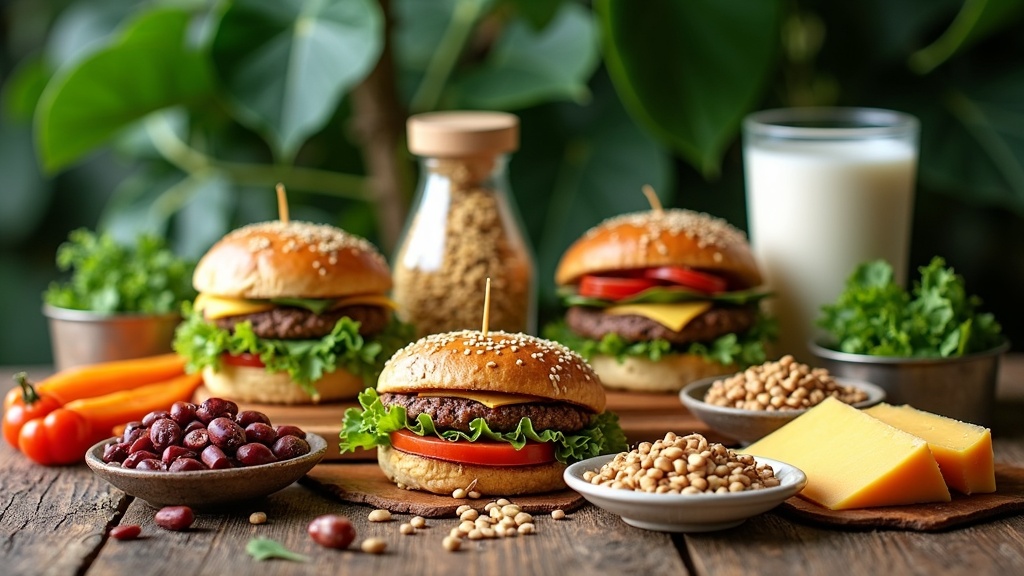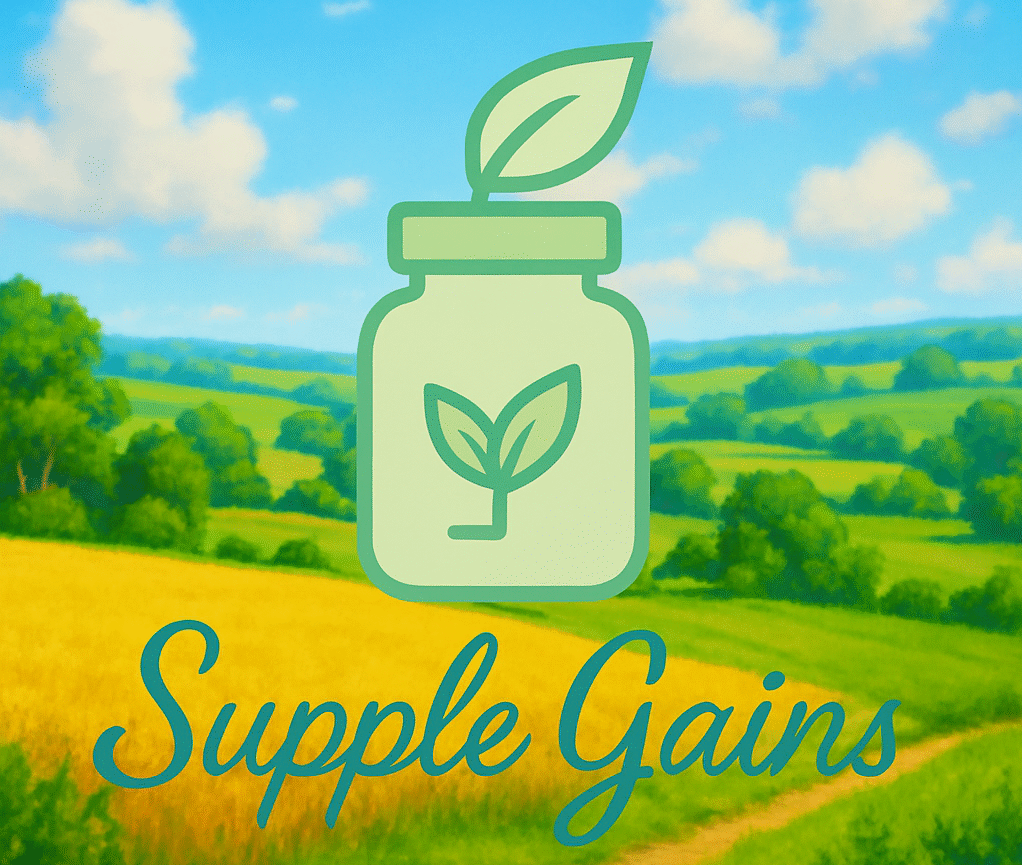Plantbased food technology is buzzing right now and feels like an adventure every time I check in on the latest updates.
If you’re interested in healthier eating, sustainability, or just tasty new foods, this area has a ton to offer.
So here’s my jump into what’s happening with emerging trends in plantbased food tech and what makes these changes really interesting.

Why Plantbased Food Tech Is Gaining Traction
The plantbased food scene is growing fast for more reasons than just the rise in vegan and vegetarian diets.
There’s a real switch up in how people look at food.
Healthy living and ecofriendly choices are driving demand.
According to the Good Food Institute, sales of plantbased foods topped $7.4 billion in the U.S. alone in 2021.
This isn’t just a trend for niche markets anymore; it’s pretty mainstream.
The jump in interest started with health concerns, but climate change and animal welfare play a part too.
Food tech companies keep rolling out tasty, convenient, and familiar options, which means you don’t have to give up your favorite foods to eat more plants.
Every year I’ve noticed grocery store shelves filling up with new, creative products that go beyond tofu and veggie burgers.
Technology is a big reason for these changes.
The latest breakthroughs, like advanced protein extraction and fermentation, are creating products that taste better, look better, and deliver better nutrition.
Keeping up with these trends feels like getting a sneak peek at the future of food.
Pillars of Innovation in Plantbased Foods
Emerging tech covers everything from ingredients to packaging.
Here are a few of the main approaches shaking things up in plantbased food tech lately:
- Precision Fermentation: Some plantbased cheeses and dairy alternatives use microbes to create real milk proteins, without using cows.
- Cellular Agriculture: Still pretty new, but scientists are working on growing real fats and proteins in labs from plant cells for better taste and texture.
- Improved Protein Extraction: The tech for extracting pea, soy, and chickpea proteins now gives us cleaner flavors and silkier textures in altmeats and dairy replacements.
These approaches mean you see huge improvements in quality and choice even from one year to the next.
On my last supermarket run, I found new “melt and stretch” dairyfree cheeses and meatless deli slices that tasted surprisingly convincing.
Practical Guide: Jumping into Plantbased Food Tech Trends
Getting involved doesn’t require you to overhaul your whole diet.
Here are some simple ways to start exploring the latest plantbased trends:
- Try One Product Swap: Switch out one staple, like milk or yogurt, with a plantbased version. Almond milk and oat milk are easy picks, and newer brands have improved flavor and consistency.
- Check the Protein Source: New altmeats are breaking away from soy. Try pea, fava bean, or even lupinbased burgers or sausages. Their textures can surprise you.
- Look Out for Fermented Foods: Keep an eye out for plantbased cheeses or butters made with fermentation. They taste richer and feel more like the “real” thing because of the upgraded tech.
- Read Ingredient Lists: A lot of new products use simplified recipes with fewer additives. This makes it easier to pick items that suit your dietary needs.
- Explore Ethnic and World Foods: The plantbased boom isn’t just about burgers. Plantforward cuisines from around the world, think Indian dals, Mediterranean bowls, or Ethiopian stews, are getting more play in prepackaged and meal kit forms thanks to global food tech advances.
Small changes like these make it easy to keep up with trends and find what works for your taste buds and lifestyle.
What to Think About Before Getting Into It Further
Plantbased food tech opens up tons of options, but it’s good to be aware of both the perks and the possible downsides.
Here are a few things I like to consider before picking new foods for my cart:
- Nutrition: Not all plantbased alternatives are automatically healthier. I keep an eye on protein, sodium, and added sugars since these can vary a lot across brands.
- Allergens: Some products lean heavily on soy, nuts, or gluten, so checking the label is important for anyone with sensitivities.
- Sustainability Claims: Many brands talk about ecofriendliness, but looking at packaging details and certifications helps keep things transparent. I find that products made locally usually have a lighter carbon footprint too.
- Price: Costs can still run higher compared to animalbased products, especially for newer tech foods like fermented cheeses. Watching for sales or instore brands helps keep things budgetfriendly.
Nutrition Up Close
It’s easy to assume anything “plantbased” counts as healthy, but there are plenty of processed foods in this category too.
I’ve seen plantbased nuggets and frozen meals with long ingredient lists.
My routine is to check fiber and protein content, avoiding versions loaded with fillers or excess salt.
Allergen Awareness
My experience at natural food expos is that many plantbased products depend on common allergens.
New products are popping up that use sunflower, hemp, or pumpkin protein to keep things allergyfriendly.
If you have allergies, it’s best to doublecheck every new product, even old favorites can mix up recipes with new tech.
Sustainability Claims
Green claims are everywhere, but not every brand backs them up with real action.
I look for thirdparty certifications (like NonGMO Project Verified or certified organic) and check company websites for transparency reports.
The most planetfriendly options usually spotlight upcycled ingredients (using food waste), minimalist packaging, and reduced food miles.
TechDriven Features Worth Checking Out
Some of the coolest features in the latest plantbased foods come straight from tech labs and new production methods.
Here are a few standout innovations that I’ve tasted, read up on, or seen launched in markets this year:
Fermented Protein Bases offer a nutty, umami flavor in spreads, cheeses, and yogurt alternatives. The texture is creamier, and they deliver probiotic benefits too.
3D Food Printing is still experimental, but a few startups are already delivering steaks and fish fillets with realistic layers and marbling, all using plantbased inputs. I’ve tried a 3Dprinted salmon at a trade show, and the similarities were impressive (even if the taste is still evolving).
“Clean Label” Innovation focuses on short, recognizable ingredient lists, think fouringredient almond yogurts or lentil pastas that leave out stabilizers and gums.
Tech like highmoisture extrusion gives us burgers and sausages that chew and cook nearly like the animalbased kind. It’s wild seeing the progress year by year.
RealWorld Benefits and Use Cases
Plantbased tech is making it easier for everyone to eat less meat without trading off flavor or satisfaction.
This ripple effect stretches into health improvements, environmental benefits, and even helping people with special diets or allergies find suitable foods.
- Better Heart Health: Swapping out animalbased foods with wellchosen plantbased options has been linked with reduced cholesterol and blood pressure.
- EcoFriendly Eating: Plantbased production generally uses less water, land, and produces fewer greenhouse gasses. Cutting back on animal products even a few times a week can have a noticeable impact.
- Bigger Food Diversity: With new tech making rarer crops more available, shoppers now have access to diverse sources of protein and nutrition, like lupin, water lentils, and even seaweed meats.
For instance, food service and school programs now use plantbased nuggets or taco fillings with kids who might never have tried these foods otherwise.
Restaurants are serving up creative, plantforward dishes that appeal to all types of eaters, not just vegans or vegetarians.
Frequently Asked Questions
Here’s what people are usually most curious about with plantbased food tech right now:
Question: Are plantbased meats healthier than real meat?
Answer:
Some are, but it depends on the product.
Plantbased burgers can be lower in saturated fat, but some are high in sodium or have extra additives.
Comparing nutrition labels is a helpful habit.
Question: What’s up with the taste and texture?
Answer:
Innovations in protein extraction and food processing really upped the game.
The newest products offer juicier, more convincing textures and flavors.
The difference over just a few years is huge.
Question: Are there any environmental downsides?
Answer:
Most plantbased foods have a smaller carbon footprint compared to animalbased ones, but imported ingredients or excess processing can bump up the impact.
Local or regional brands often offer the lowest footprint.
Wrapping Up
Plantbased food tech is changing how we cook and eat, with new flavors, improved nutrition, and practical options rolling out all the time.
Trying out these new foods is fun (and sometimes surprising), plus it lines up with eco goals and healthy living.
Whether you’re an early adopter or just plantcurious, there’s a fresh lineup of products and trends coming out every year worth checking out.
If you want to keep up with what’s happening, stay tuned to food tech news and don’t be afraid to taste something new next time you’re in the grocery aisle.
Small steps can add up to big change for your diet and the planet.
